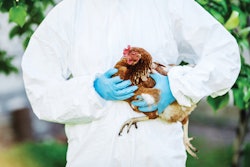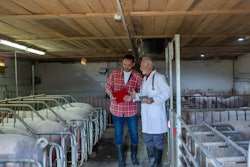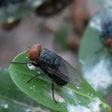
A universal flu vaccine — a jab intended to protect recipients from all possible strains of the highly diverse influenza family of viruses — might not be a once-and-done procedure for humans. But it might be for pigs, according to new research from the University of Nebraska-Lincoln.
The goal of a flawless universal vaccine that would knock out all possible variations of influenza might be a bit of a stretch — and may never be entirely possible, according to Eric Weaver, director of the Nebraska Center for Virology at the University of Nebraska-Lincoln. Influenza viruses are made up of “blocks” of genetic material that can recombine in any number of ways and still produce a viable virus, he explained. Creating a single vaccine that will knock out all possible combinations no matter what future mutations may occur is unlikely, Weaver said.
Weaver’s more realistic goal is to improve the durability of the flu shot. Instead of an annual jab, he said, you might only need to get an initial dose at age five, and then again at age 50. And while this is still some way off for humans, the Nebraska Center for Virology may be closing in on a solution for pigs.
In a trial detailed in the May edition of Frontiers in Immunology, piglets that received one of the center’s experimental vaccines were still protected from a variety of influenza viruses six months later. That suggests a single dose of this vaccine could protect pigs for the entire production lifetime of an animal raised for market, Weaver said.
Piglets dosed with a commercial vaccine already on the market were only protected from the virus for about two to three months during the trial.
Weaver started testing vaccines in pigs because they represented a better model for humans than mice. But swine may also be a good candidate species for a university flu vaccine, Weaver said. While certain strains of the influenza virus generally infect either birds or humans, pigs are susceptible to human influenza viruses, avian influenza viruses, and swine-specific influenza virus. Multiple influenza viruses can infect a pig at the same time, and while there they made trade genetic “blocks,” resulting in new influenza viruses and allowing strains that usually infect one species to spread to others.
The same technology behind the universal vaccine for swine could also be applied to other species, including chickens, Weaver said. However, at an average cost of more than a dollar a dose, he said it’s unlikely that a universal vaccine for poultry would be cost effective. Further innovation is needed to decrease the cost to viable margins for poultry, Weaver said.
And it will be some time before a universal vaccine is available for any species. Weaver’s goal is to find commercial partners and begin clinical trials sometime in the next three to five years. That would bring the vaccine to market in five to 10 years’ time, depending on the availability of funding and other resources. Weaver’s most recent work was funded by the U.S. Department of Agriculture.















